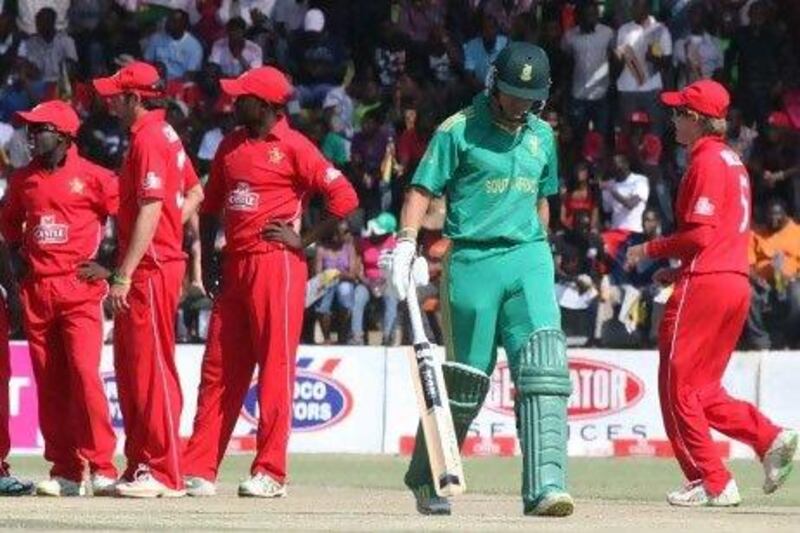Not a day goes by without an article or a televised debate on the future of Test cricket and how it can withstand the onslaught of the brash new kid on the block, Twenty20.
The answer is not complicated, but few address it for fear of being branded heretics. In terms of the skills involved, Twenty20 cricket is as far removed from the five-day game as sevens rugby is from the 15-man bruise-fest.
Rugby's administrators had the good sense to recognise that and give both versions the space they needed to thrive. Cricket, with its one-size-fits-all philosophy, has failed miserably to do so.
Fiji's Waisale Serevi was a magician on the sevens rugby field, but far less influential in the traditional game.
There is sensible recognition that some skill sets cannot be transferred. Victor Matfield's line-out domination has no place in the sevens game, just as Kenya's electric Collins Injera has less space to exploit on a 15-man field.
Cricket, however, continues to delude itself. Batsmen whose techniques are clearly not cut out for the rigorous examination that Test cricket offers are mocked because of it, while those in the classical mould, like VVS Laxman, merely look like grotesque caricatures of themselves when they try to adapt to the shortest form.
Instead of ridiculing Kieron Pollard, Yusuf Pathan or Suresh Raina, we just need to accept that they showcase a different set of skills to an alternate audience.
Michael Atherton's 277-ball vigil at Trent Bridge in 1998 might have delighted the purist, but for those not raised to appreciate the dead-bat forward defensive, it would be akin to watching paint dry.
The thrill-a-minute crowd would appreciate a Twenty20 game where the two teams combine for more than 400 runs. To those accustomed to an even contest between bat and ball, such a match would be no more significant than a Harlem Globetrotters basketball exhibition.
There are a sizeable number of fans who enjoy watching each form of the game, even the much-maligned 50-over game.
But for the most part, the gnashing of teeth over Test cricket's future and an overly hectic itinerary would end if national associations acknowledged that Test cricket's marquee players are not necessary for Twenty20 to thrive.
What the five-day game also needs is some quality control. Talk of expanding the Test-cricket pool to include the likes of Ireland and Afghanistan is out of place.
Bangladesh and Zimbabwe still barely win a game, while West Indies and New Zealand struggle even on home turf. The format does not need more one-sided series.
If cricket evangelism is high on the agenda, then Twenty20 needs to be the gospel. The unofficial Twenty20 series in Zimbabwe this past week has shown how much easier it is for the weaker sides to compete on an equal footing.
Both Zimbabwe and Bangladesh beat South Africa, results that would be extremely unlikely even in the 50-over format.
The gulf in ability that is so glaring in the first-class arena can be bridged in the limited-overs games.
Holland are having a tremendous season in England's domestic competition, while Afghanistan are set to cause a splash or two at Twenty20. In most of these countries, there is not even a first-class competition.
Asking them to step up to Test cricket would be like asking an amateur boxer used to five two-minute rounds to take on a professional champion.
Test cricket needs to focus on quality, not quantity, while Twenty20 is used to spread the word. With so much emphasis on privately-owned franchises though, that is unlikely to happen anytime soon.
[ sports@thenational.ae ]
Follow us
[ @SprtNationalUAE ]
& Dileep Premachandran
[ @SpiceBoxofEarth ]





